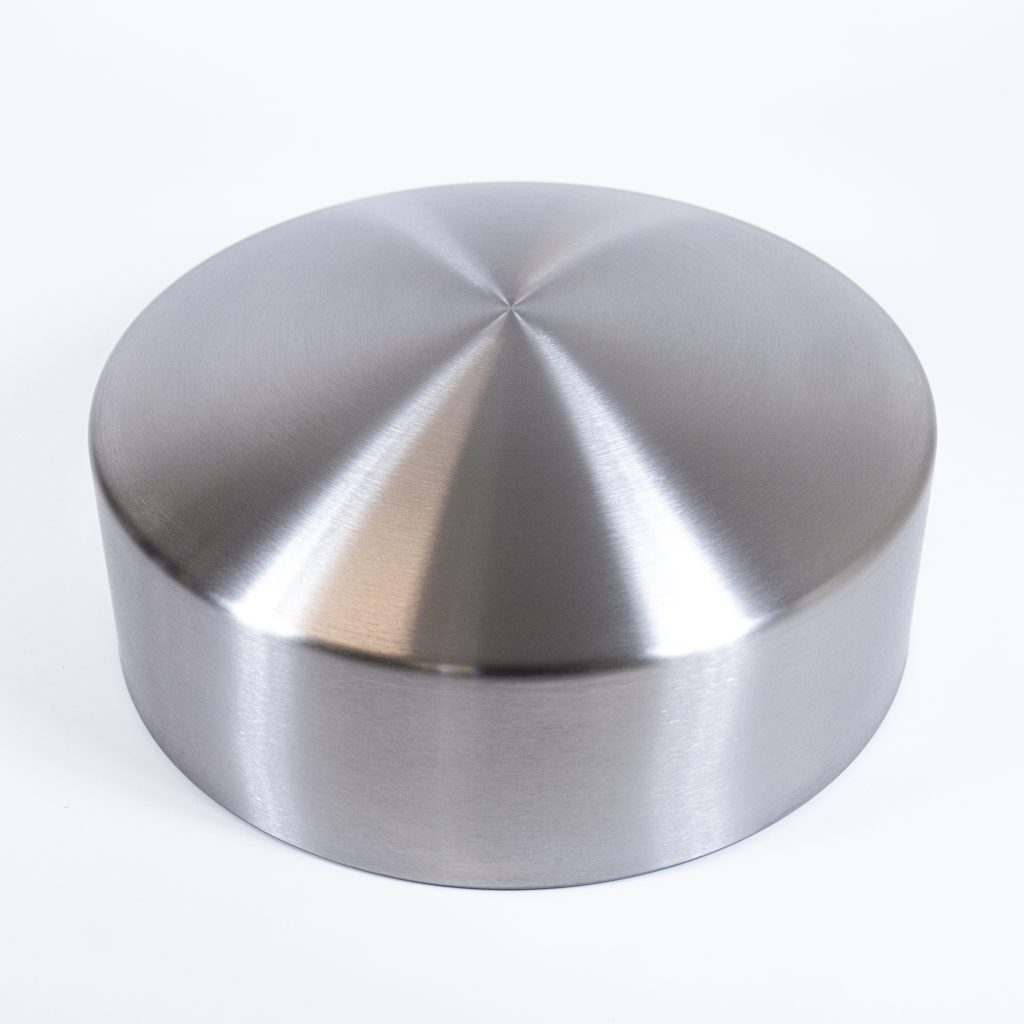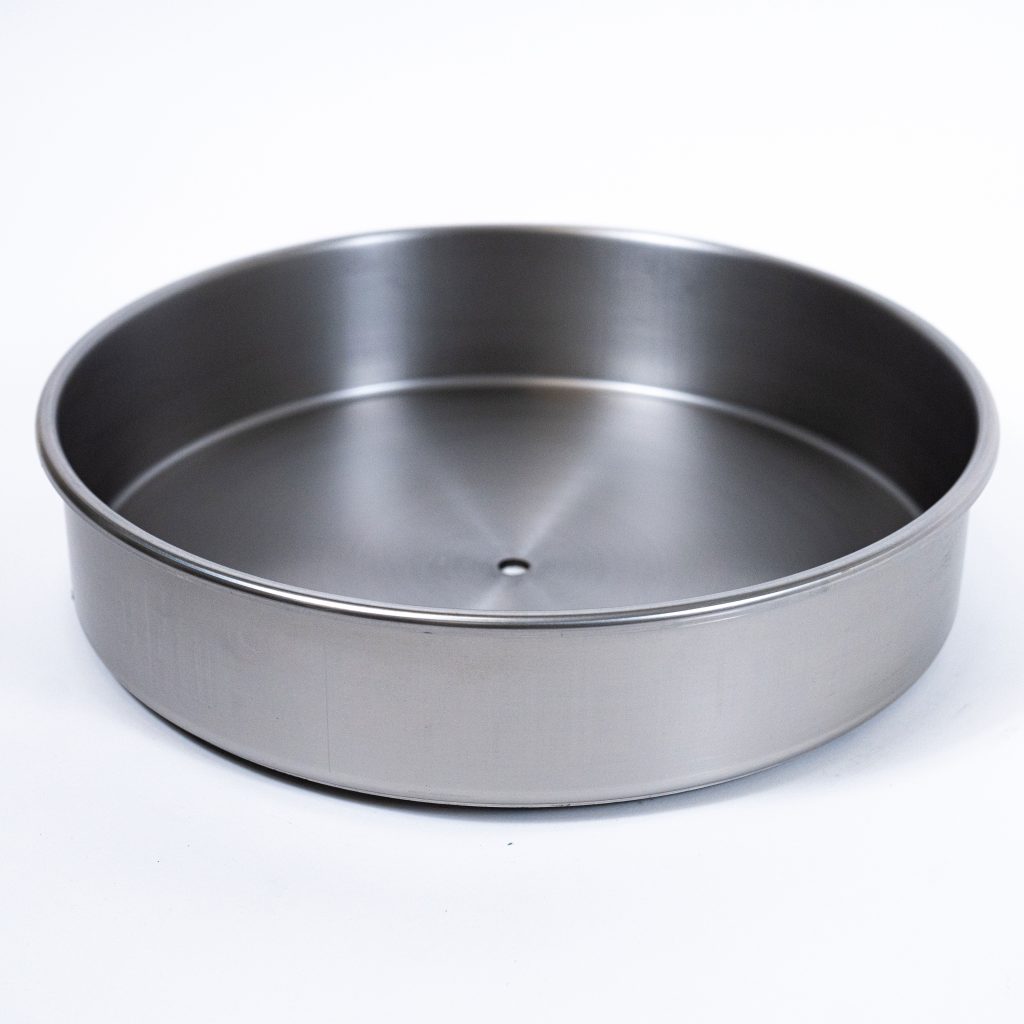Deep Drawing and Sheet Metal Stamping with Stainless Steel
Stainless steel is ideal for deep drawing and metal stamping. Press cycle times are faster than metal spinning and welding operations – draw and stamp processes can form one-piece, seamless constructions, meaning the final shape can be formed from a single blank in one or two draws, and can be shipped shortly after being taken off of the press. Deep drawing with stainless steel can achieve deeper draws than other materials like aluminum.
Stainless steel is made up of at least 10.5% chromium, with additions of nickel, iron, and manganese, making it an extremely durable metal equipped with anti-corrosion properties. When exposed to oxygen, the chromium in the stainless steel oxidizes, forming its own protective layer making it highly resistant to moisture and corrosion.
SS 304 is a popular choice due to its excellent corrosion resistance, value, and cost-effectiveness. It is an easy metal to sanitize, making it ideal for kitchen and food processing applications. SS 316 has great properties for chlorine and saltwater or marine environments, allowing it to be utilized with a wide variety of applications.
Stainless steel series that are ideal for forming include 200, 300, and 400.
Well Known Stainless Steel Properties
- Extremely durable
- Very formable
- Corrosion resistant
- Can easily be sanitized
- Known for its modern appearance and look
- Low maintenance and replacement costs
- More durable than most sheet metals
- Capable of being electropolished


Natural Occurring Downsides to Forming Stainless Steel
- Corrosion: Due to stainless steel’s sensitivity to hydrochloric acids
- Intergranular Corrosion: under intense heat (900-1500 degrees F) the chromium content of stainless steel is removed, the damaged area is recognizable by the presence of a blue and orange stain around the affected area. For example, this may occur during the welding process.
- Pitting: can occur when the metal is prevented from producing the chromium oxide film that protects it – this results from dirt-build up on the surface that keeps oxygen from reaching the surface and developing this protective film
- Galvanic Corrosion: stainless steel can become corrosive when comes in contact with lead, nickel, copper, copper, and graphite
How to Avoid Galling During Deep Draw Metal Stamping
Galling is a wear that happens when two metallic surfaces slide against each other. This is common in press forming, especially deep drawing. The sliding of the metals causes friction and adhesion that can cause the material to transfer between the two surfaces. The result may be very noticeable or can be microscopic. Typically, the result of galling is noticeable and can be fixed by applying more lubricant to the next blank. Stamping dies are commonly made of high-chromium-alloy steel. Since stainless steel shares high chromium levels, it is important to is extremely important to apply the lubricant for the tooling to last as long as possible.
Common Markets for Deep Drawn and Stamped Applications
- Hospitality
- Architecture/Furniture
- Lighting
- Automotive
Typical Applications Formed by Deep Draw Metal Stamping
- Vessels
- Chambers
- Tanks
- Receptacles
- Enclosures/housings
- Domes
- Cups and Pans
- Covers/Lids
- Shells
- Hardware
Typical Past and Present Deep Drawing Uses According to the US General Services Administration
- Martensitic stainless steel was originally used for cutlery and munitions in the early 1900s
- Ferritic stainless steel was used for the electric light bulb filament and was commonly used for turbine blades in the early 1900s
- Austenitic stainless steel was developed in 1909 and 1912 and was commonly used as formed sheets in architectural construction
- Austenitic stainless steel = iron-chromium-nickel and iron-chromium-nickel-manganese alloys containing 18% chromium and 8% nickel
- Was manufactured in Great Britain for cutlery, stoves, and motor cars
- In the late 1920s and early 1930s it was marketed for kitchen use, public lobbies, exterior ornament, railings, hardware, doors, light fixtures, furniture, signage, and equipment
- Notable buildings incorporating the use of stainless steel include the Chrysler Building (1930) and the Empire State Building (1931)
- Used for plaques, signs, and sculptural elements
- Used in artwork in many extruded shapes for storefronts, trim, hardware